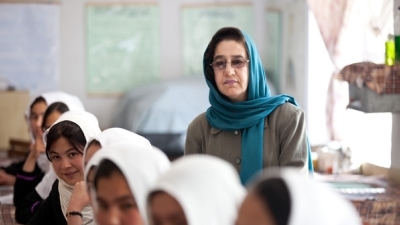Challenge
Despite steady progress during the past decade, challenges in terms of enhancing access, equity, and quality remain. Roughly 50% of schools do not have proper buildings. More than 50 percent of the teachers have not graduated from Grade 12. In addition, provisions of textbooks and incentives for teachers are also minimal, prompting high dropout and absenteeism rates among students and teachers. Furthermore, education outcomes are stark in insecure provinces. Around 500 schools across the country were shut because of insecurity in the past year. Female participation in education as students, teachers and school administrators is low in rural and insecure areas.
Approach
The Afghanistan Reconstruction Trust Fund (ARTF) and World Bank sought to encourage community participation and secure long-term sustainability of its work by aligning project development objectives with the government’s development objectives and its education strategies and plans. Improving the quality of outputs as well as enhancing the overall quality of teaching and the learning environment is critical. School infrastructure grants, quality improvement grants, and teacher and principal training have helped bring about notable improvements in quality and participation in education. In addition, the formation of school shuras (community-led decision-making bodies) has helped enhance community participation and local ownership of education investments. The shuras help facilitate community contracting for establishing new schools and also help create school improvement plans, as well as providing round-the-clock support on various issues facing the schools.

